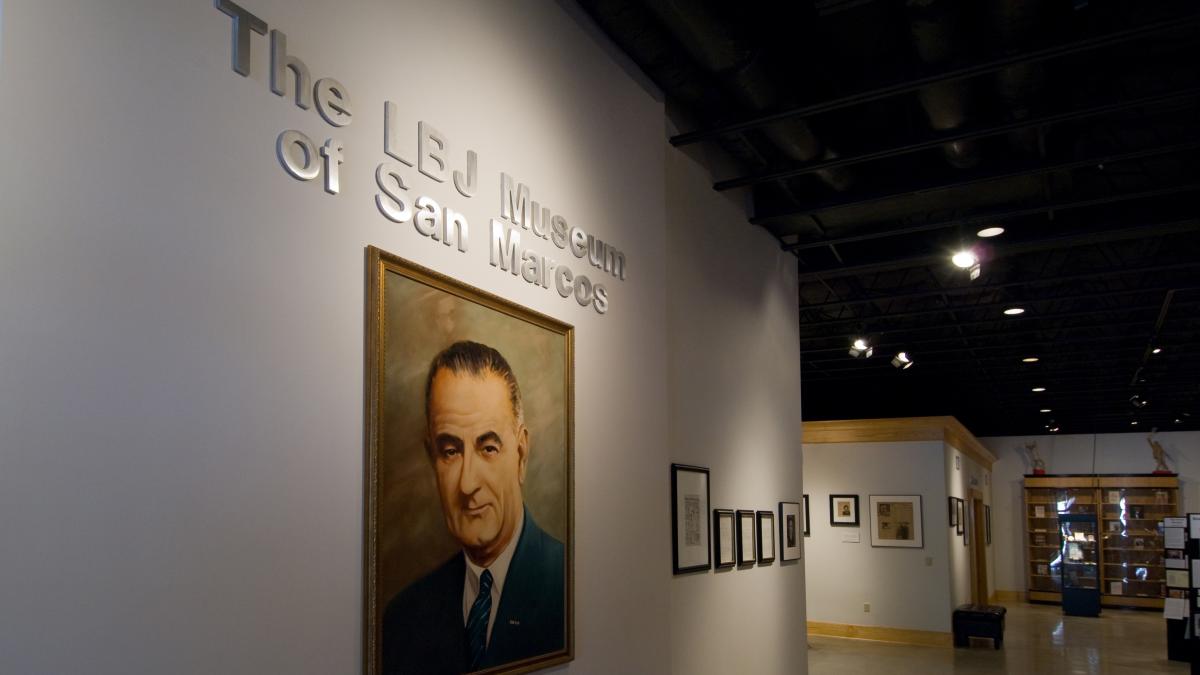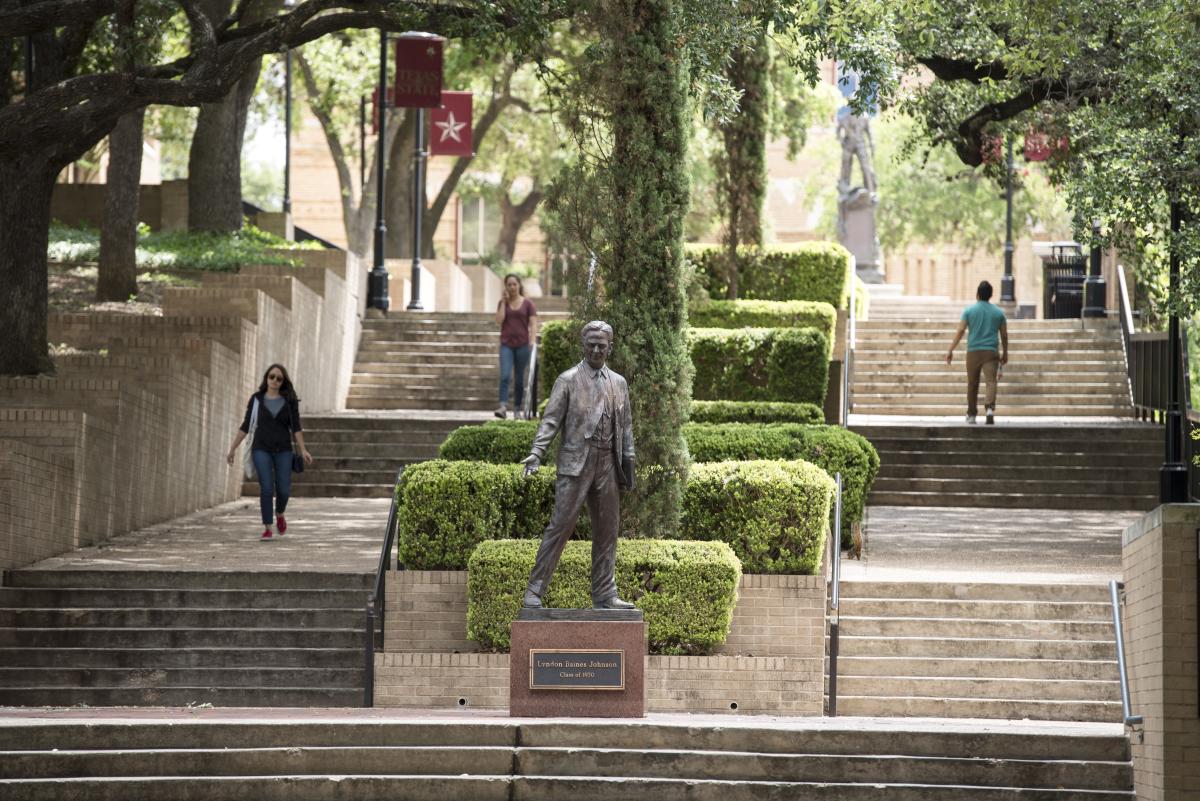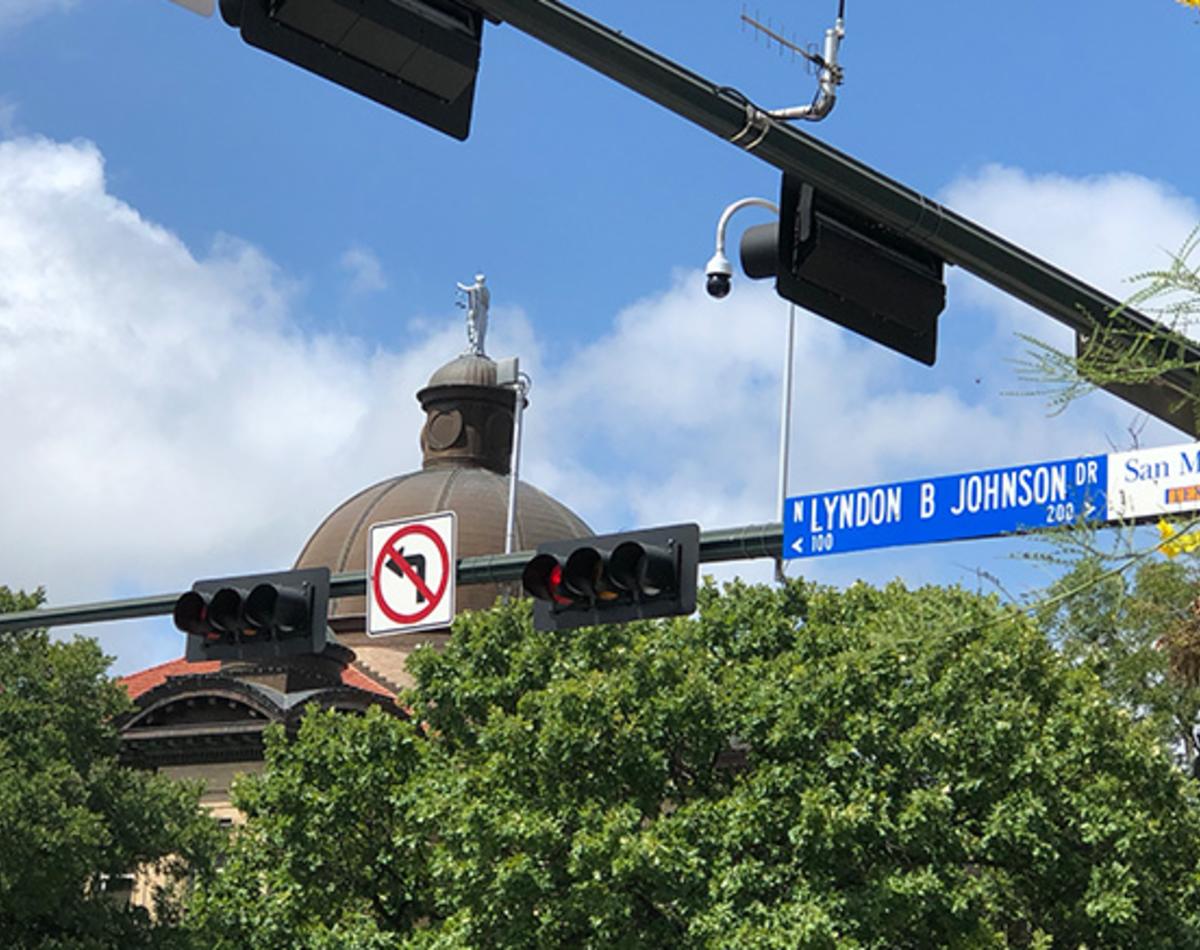A fun fact about San Marcos is that at one point it was home to a future US President! Lyndon B. Johnson, 36th President of the United States, was a student at Texas State University back when it was Southwest Texas State Teachers College and became a San Marcan. From a museum in his name to his old college stomping grounds, we put together a guide to see some of the places in San Marcos where President Johnson left his mark.

LBJ Museum
Explore the Presidential legacy in San Marcos at The LBJ Museum of San Marcos. The museum preserves the legacy of Lyndon B. Johnson (LBJ) by focusing on his years spent as a student at what is now Texas State University (then Southwest Texas State Teachers College), his teaching experiences in South Texas and the impact of these experiences on his role in the development of landmark legislation in the areas of education and civil rights. Texas State University is the only Texas college to graduate a future President of the United States (and, in fact, lays claim to the only United States Vice President as well!)
 Courtesy of Texas State University
Courtesy of Texas State University
LBJ Statue
The LBJ Statue is an almost life-size depiction of LBJ as a student. The statue was unveiled in 2006 and stands in front of the stairs leading up to the Old Main building on the Texas State campus. LBJ graduated from the university in 1930 with a bachelor of science in history with a permanent teaching certificate.
 Courtesy of Texas State University
Courtesy of Texas State University
Old Main
LBJ returned to San Marcos and the Texas State campus on several occasions. He returned to sign the Higher Education Act in 1965, which was supposed to take place out front of Old Main but due to rain was moved inside Strahan Gym. He also re-dedicated Old Main in 1972. You can hear his speech at the re-dedication HERE. It’s said that LBJ had reoccurring nightmares of being late for class and trying to run up the never-ending stairs that lead to Old Main.
 Courtesy of Texas State University
Courtesy of Texas State University
Alumni House
The Alumni House, or the Center for Student Retention building, was once a boarding house where LBJ resided during his time in San Marcos. The home was built in 1896 and was moved from its original location to the Texas State campus in the 40s-50s. The building houses some memorabilia and furnishings from when LBJ was a resident. The Alumni House is a working office and not open to visitors, however, you can read about the building's significance on the plaque outside and appreciate the charm of the exterior.

Crossroads Memorial
The LBJ MLK Crossroads Memorial is a visible monument at the corner of LBJ and MLK Drives in Downtown San Marcos, honoring the historic efforts of President Lyndon Baines Johnson and Dr. Martin Luther King, Jr., in forging the most significant Civil Rights legislation since the Civil War. The crossroads of LBJ Drive and MLK Drive is extra unique as its the only American intersection bearing the names of both of these leaders.

“East Side of The Square”
A fun little trivia for LBJ Drive that runs through Downtown San Marcos is the feud over the naming of the street. H.C. Kyle, Jr., was a prominent Republican and well-known attorney with an office, well, on the east side of the square. Legend has it, Kyle and President Lyndon B. Johnston, former San Marcos resident and Texas State University student, competed against each other for the editor position for the university’s paper. LBJ won the position and there were some hurt feelings. When Kyle opened his practice, the business was on Austin Street, but the street was later renamed LBJ Drive to honor the president. That didn’t sit well with Kyle… He refused to acknowledge LBJ Drive as his office address and instead every address listing, from the phone book to his business cards, referred to the address as the East Side of the Square.

